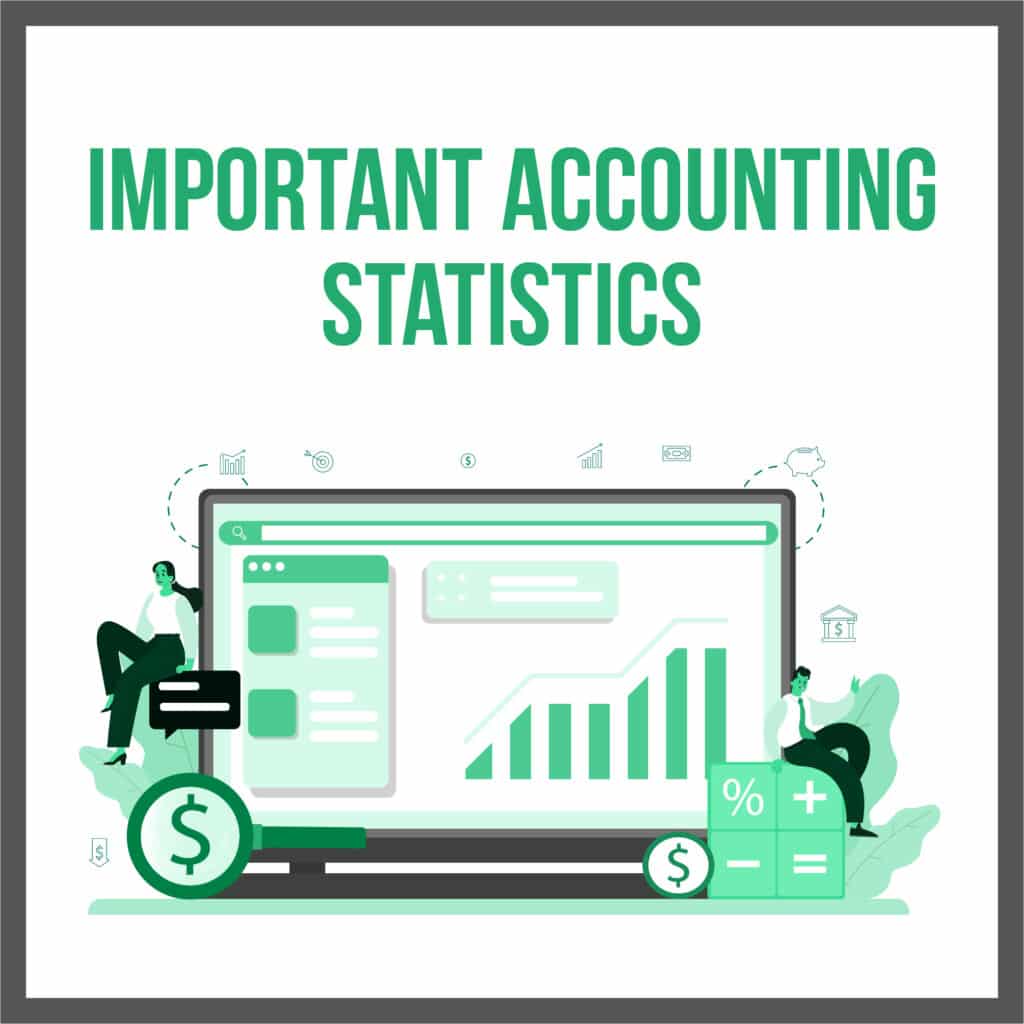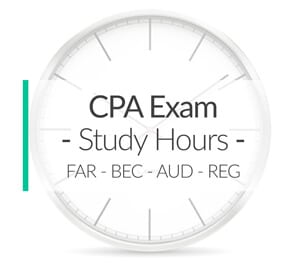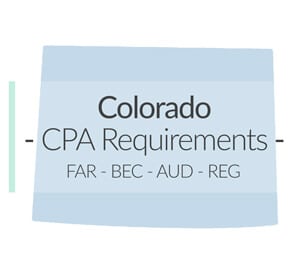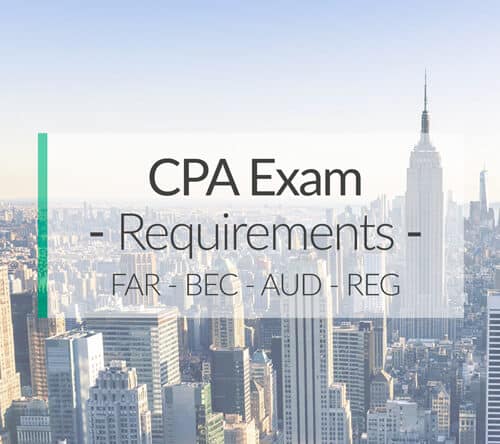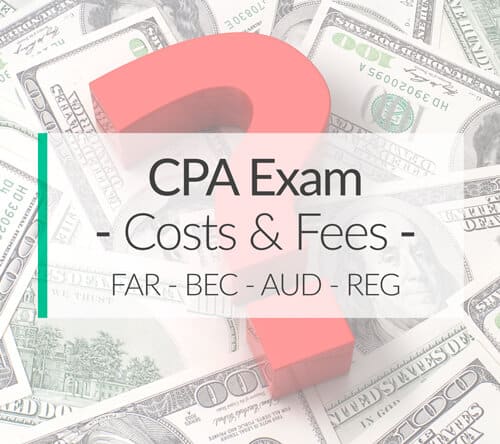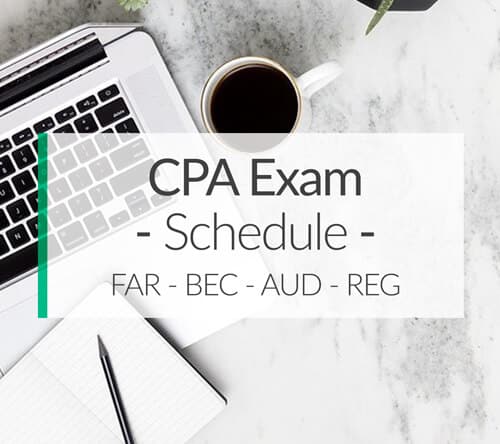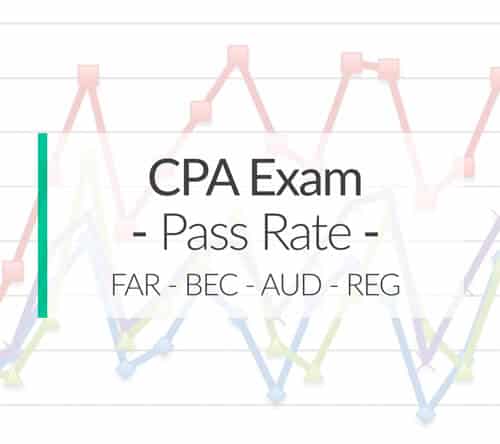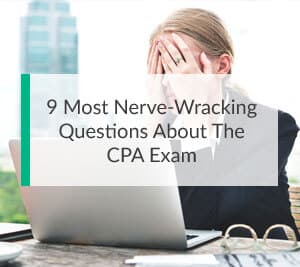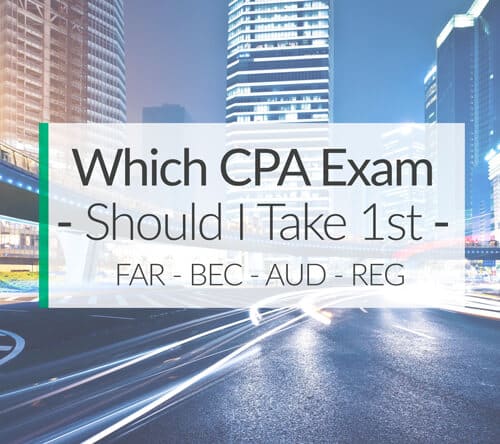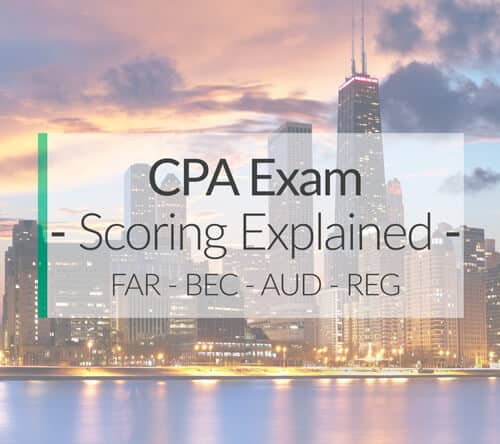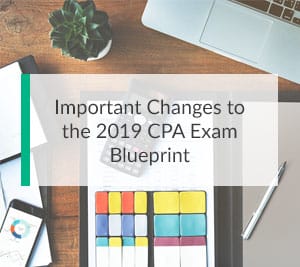The Financial Accounting and Reporting (FAR) section of the CPA exam covers many topics related to posting accounting transactions and generating financial statements. This test is all about the day-to-day work of accounting; consequently, you’ll be tested on a number of formulas.
The FAR test typically requires the most amount of study time out of the four tests on the CPA exam, and the amount of material can seem overwhelming. To make your study process easier, make sure that you understand these frequently tested formulas on the FAR test and you should be able to put your mind at ease.
Ending Inventory
Inventory is heavily tested on the FAR test because inventory is often the largest asset on the balance sheet. Hence, the formula for ending inventory is tested in a variety of ways.
Here’s the formula:
(Beginning inventory) + (purchases) = (goods available for sale) – (cost of goods sold) = Ending inventory
Assume, for example, that you own a sporting goods store, and your goods available for sale balance looks like this:
$800,000 beginning inventory + $300,000 purchases = $1,100,000 goods available for sale
The goods available for sale balance is a subtotal; this balance is either sold or remains in ending inventory. That statement should make sense if you visualize the shelves in a sporting goods store. At the close of business, inventory has either been sold or it still remains on the shelf.
If your cost of goods sold is $500,000, the ending inventory balance is ($1,100,000 – $500,000 = $600,000).
Use the mental image of a retail store to remember the ending inventory formula!
Pension Formula
The FAR test includes a formula that calculates a firm’s liability related to pension benefits. If a company offers a pension, they are required to calculate and report the liability to pay pension benefits.
The best way to study this formula is to visualize a bucket. Dollars are flowing into and out of the bucket to pay the pension liability.
Here is the formula:
(Contributions) + (Expected rate of return) – (Service costs) – (Interest costs)
The firm’s pension contributions increase the money in the bucket along with the expected return on assets invested in the bucket. Service costs and interest costs take money out of the bucket.
A pension plan’s service cost is the present value of the projected retirement benefits that must be paid to employees. The service cost, on the other hand, is based on the monthly pension payment may that be paid to each worker, and each employee’s life expectancy.
Furthermore, workers earn interest on the pension assets in the bucket; this interest cost is also subtracted from the total in the bucket.
Make sure that you understand each of the four components of the pension liability formula. Yes, it will be on the test!
Diluted Earnings Per Share (EPS)
When net income is generated in the income statement, the amount is posted to the balance sheet as an increase to retained earnings. Essentially, net income represents company earnings.
The FAR test makes a distinction between basic earnings per share (EPS) and diluted EPS. Consequently, you will need to understand both of these concepts in order to stand a chance on the exam.
Basic EPS
Basic EPS tells you the dollar amount of earnings a firm generates per common stock share. The formula for this is:
(Earnings per common share) / (Weighted average common stock shares outstanding)
Weighted average is simply [(beginning balance) + (ending balance)] / 2.
Diluted EPS
Diluted EPS assumes that any securities that can be converted into additional shares of common stock are converted.
So how is this calculation different from the basic EPS formula?
The dollar amount of earnings has not changed, only the number of common stock shares is different.
Assume, for example, that a company’s EPS is ($2,000,000 / 250,000 shares), or $8 per share. If the number of common stock shares increases to 350,000, EPS declines to $5.71 per share.
The additional shares diluted EPS because the same dollar amount of earnings must be allocated to more shares. Here are securities that can be converted into common stock shares:
- Stock options
- Rights and warrants
- Convertible bonds and convertible preferred stock
Think about diluting something by pouring it into water, and that will help you visualize the concept of diluted EPS!
Multi-Step Income Statement
Profit Margin
How can you compare the profitability of multiple products, each with a different sales price?
The answer is using the profit margin formula, which appears frequently on the FAR test. The profit margin formula is: (profit / sales price)
Sales mix, on the other hand, refers to the combination of products sold. Furthermore, a business can change the sales mix of products to generate a higher overall company profit.
Let’s look at an example based on the same furniture store from earlier:
Assume that the furniture store earns $4 on a stool priced at $20, and $45 on a table priced at $300. The profit margin on the stool is ($4 / $20), or 20%, while the table only produces a 15% ($45 / $300) profit margin.
Note that a higher sale price does not always mean a higher profit margin. In this case, the furniture store can increase total profits by selling more stools and fewer tables.
Goodwill
The calculation of goodwill is a topic that relates to consolidated financial statements; many CPA candidates struggle with this concept.
Goodwill is defined as the amount of money paid for a business above the fair market value. Here’s an example:
Standard Machine purchases 100% of the assets of Acme Manufacturing. In a consolidation, the assets and liabilities of the purchased company (the subsidiary) are presented at fair market value.
FAR test questions will state that the parent company is purchasing the “net assets” of the subsidiary. The term net assets refers to assets minus liabilities.
If the fair market value of Acme’s net assets is $1.5 million, and Standard pays $2 million for the business, $500,000 in goodwill is posted to the consolidated financial statements.
Conclusion
Make sure that your understand these formulas before you take the FAR section. Knowing these formulas will help you answer multiple test questions and save you time.
Learn this information to start the FAR CPA exam with confidence!









